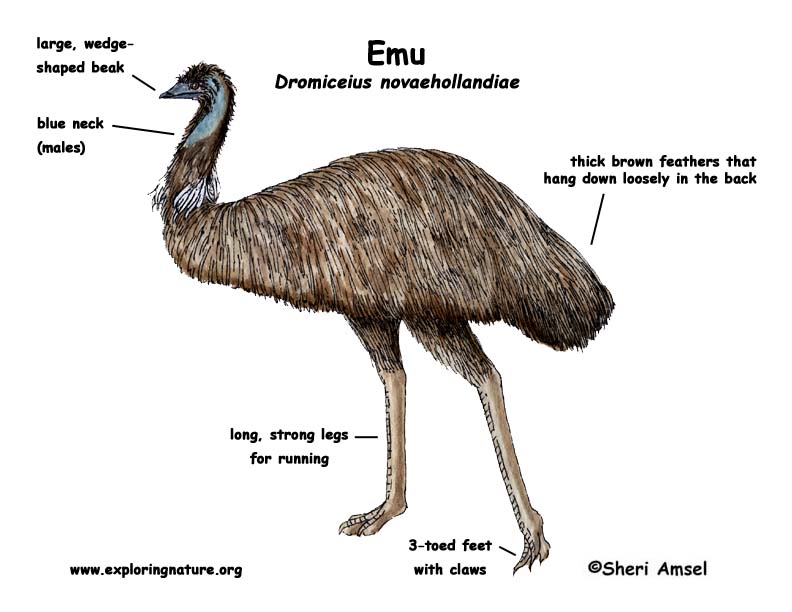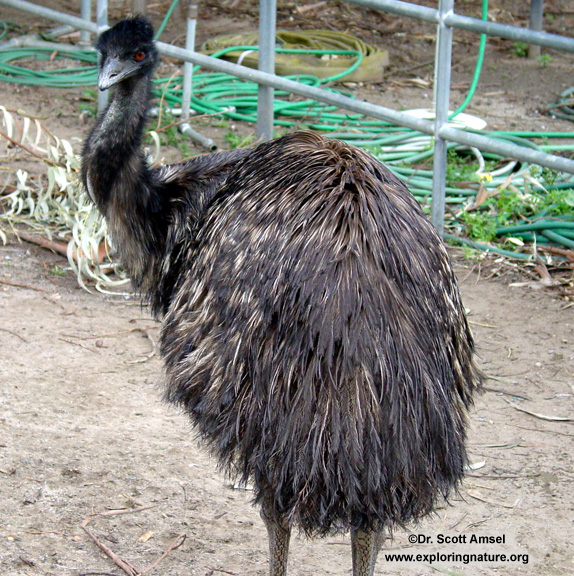

They are found throughout Australia.
They live on the dry plains, woodlands and on farms.
They can be up to 6 feet tall. They are the tallest bird in Australia and the second tallest bird in the world (only ostriches are taller). They have strong legs for running up to 50 km per hour.
Emus wander widely throughout their habitat looking for water. They can run up to 30 miles per hour. They live either alone, in pairs or in small groups. Females pick their mate and seem to rule over the males. They live 5-10 years in the wild.
Emus eat leaves, grass, fruit, and insects, changing with what is there in each season. In spring and summer they eat flowers and seeds. In the winter they eat plants and they eat insects any time.
When a female emu finds a partner, they build a nest of grass on the ground in May - June. The female lays 5-20 dark green eggs. Then she leaves both the eggs and her mate and doesn’t come back. It is the male’s job to care for the eggs and then the hatched baby emus. They will stay with their father for up to 2 years.
Domain: Eukarya
Kingdom: Animalia
Phylum: Chordata
Subphylum: Vetebrata
Class: Aves
Order: Struthioniformes
Family: Casuariidae
Genus: Dromaius
Species: D. novaehollandiae
When you research information you must cite the reference. Citing for websites is different from citing from books, magazines and periodicals. The style of citing shown here is from the MLA Style Citations (Modern Language Association).
When citing a WEBSITE the general format is as follows.
Author Last Name, First Name(s). "Title: Subtitle of Part of Web Page, if appropriate." Title: Subtitle: Section of Page if appropriate. Sponsoring/Publishing Agency, If Given. Additional significant descriptive information. Date of Electronic Publication or other Date, such as Last Updated. Day Month Year of access < URL >.
Amsel, Sheri. "Emu" Exploring Nature Educational Resource ©2005-2024. December 17, 2024
< http://exploringnature.org/db/view/193 >


